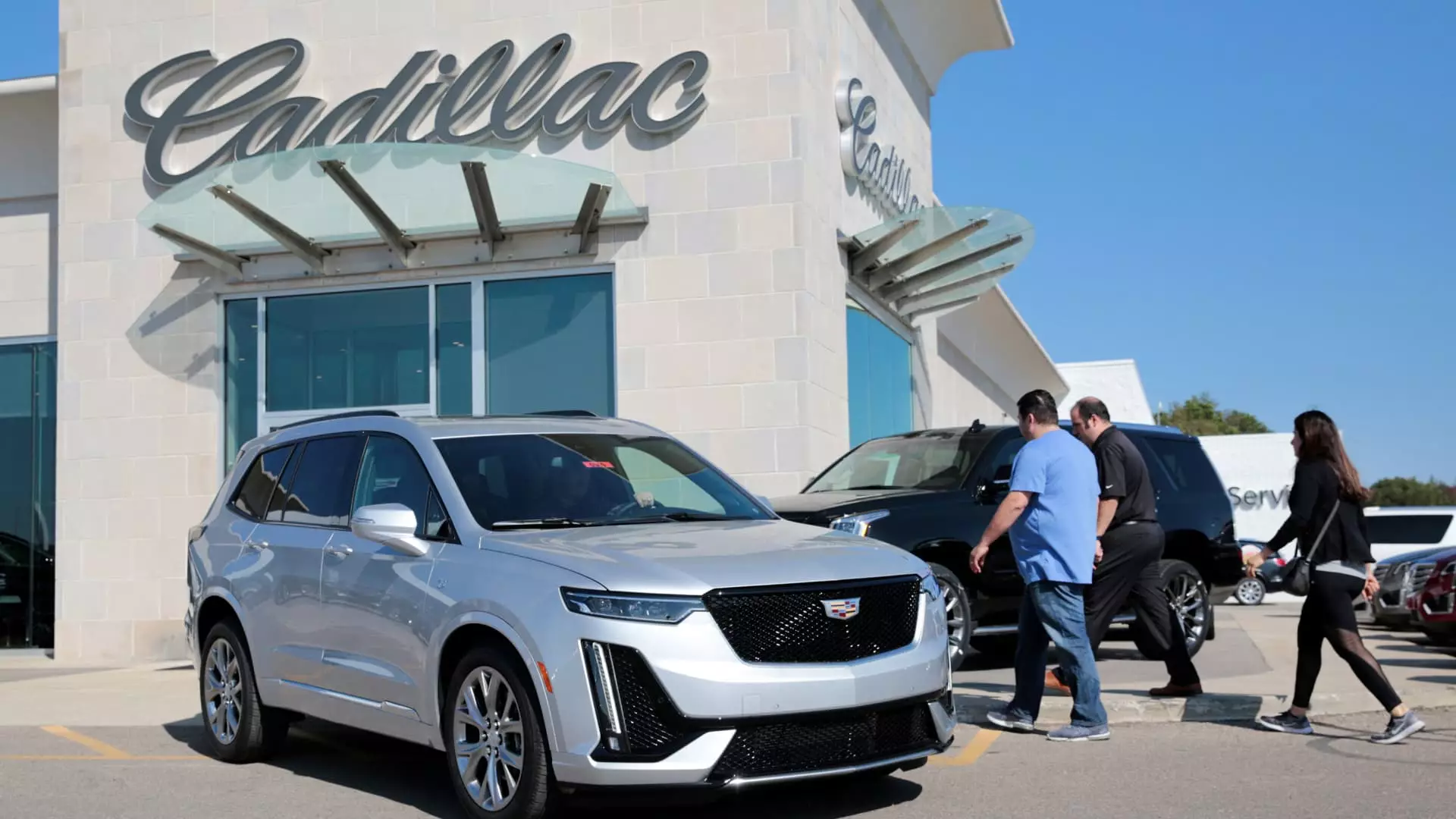In an unexpected yet perhaps calculated move, General Motors has announced the termination of production for the XT6 crossover, a decision that sends ripples through the automotive landscape. The Spring Hill assembly plant in Tennessee, traditionally a hub of Cadillac’s innovation, will adjust its focus as the company pivots away from gasoline-powered vehicles toward an electrified future. While the announcement is shrouded in ambiguity, one thing is clear: the auto industry is shifting gears, and Cadillac is no exception.
The discontinuation of the XT6, Cadillac’s three-row crossover that has struggled to find its footing in the competitive market, raises several questions. Despite an internal memo claiming “strong customer demand” for the XT5—a smaller crossover that will continue production until at least 2026—the rationale behind phasing out the XT6 feels more like an admission of failure than a strategic alignment with future goals. It reflects an awkward reality: while Cadillac champions innovation and a transition to electric vehicles, its legacy models are becoming more of a burden than a boon.
Sales Struggles and Market Dissonance
The Cadillac XT6, launched in 2019, has had a tumultuous track record with annual sales averaging a meager 19,000 units. When compared to its more successful counterparts, the Escalade and the Lyriq, its performance appears disappointing. One has to wonder whether Cadillac miscalculated consumer preferences or failed to properly market the XT6. Shared components with the more affordable GMC Acadia do not help its case; rather, they risk diluting the Cadillac brand, which has prided itself on luxury and exclusivity.
The question looms larger than the sales figures: why invest in a vehicle with such a lackluster history when customers are clearly gravitating toward fully electrified options? The Cadillac Lyriq, the brand’s first EV, has been performing well in an increasingly electrified marketplace, making it seem like a glaring oversight to continue production on a fading gasoline model.
The Electric Future: A Double-Edged Sword
As Cadillac charts its course toward full electrification, including a bold initiative to roll out a complete lineup of electric vehicles by 2030, the discontinuation of gasoline-powered offerings may signify a necessary but drastic shift. However, the promise of innovation must be balanced against the realities of consumer expectations and market trends. The fact that Cadillac has adjusted its goalposts—scaling back on ambitions to go all-electric by 2030—raises eyebrows, prompting skepticism about the brand’s commitment to this ambitious transformation.
Moreover, the strategic decision to continue producing the XT5 underscores the dissonance within Cadillac’s offerings. While the market undeniably displays demand for compact luxury crossovers, Cadillac’s identity risk evaporating with the end of its gasoline lineup. If GM wants to preserve Cadillac’s reputation for luxury, it must understand that “electric” should never mean “less luxurious.”
In an era where consumers expect sustainable options wrapped in appealing packages, GM must innovate without losing the essence of the Cadillac brand. The recent decisions at the Spring Hill plant signal both a departure and a plea: to adapt or potentially face irrelevance, all while holding the weight of an illustrious heritage.

